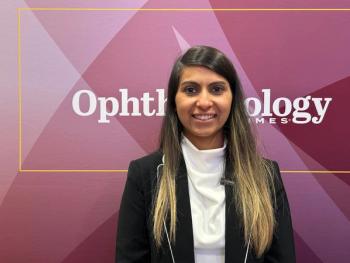
Growth factors can help regulate corneal fibrosis and scarring
There are common molecular and cellular mechanisms in differenttissue types and key genes that regulate wound healing.Transforming growth factors (TGFB) and connective tissue growthfactor (CTGF) are important growth factors that interact in thesteps leading to scarring, according to George Schultz, PhD, whospoke at the annual meeting of the Association for Research inVision and Ophthalmology.
There are common molecular and cellular mechanisms in different tissue types and key genes that regulate wound healing. Transforming growth factors (TGFB) and connective tissue growth factor (CTGF) are important growth factors that interact in the steps leading to scarring, according to George Schultz, PhD, who spoke at the annual meeting of the Association for Research in Vision and Ophthalmology.
"Corneal wound healing is similar to the molecular and cellular wound-healing events in the skin," said Dr. Schultz, of the University of Florida, Gainesville. The hypothesis is that injury induces release of TGFB1 and TGFB2, which sets up a series of events. A key event is the up-regulation CTGF, which in turn mediates proliferation, extracellular matrix synthesis, and contraction.
If this hypothesis is correct, there may be places to intervene in the cascade of events to regulate corneal scarring. Dr. Schultz discussed strategies to regulate corneal scarring that included topical application of antiproliferative drugs such as mitomycin C, or gene-targeted agents such as antisense oligonucleotides, ribozymes, and siRNAs.
"At least two growth factors, TGFB and CTGF, play important roles in producing corneal haze or scarring," Dr. Schultz said. "The positive thing for us is that there are exciting opportunities and developments that are on the horizon through which it might be possible to use these approaches to reduce the fibrotic changes and allow us to regulate the corneal scarring with minimal complications."
Newsletter
Don’t miss out—get Ophthalmology Times updates on the latest clinical advancements and expert interviews, straight to your inbox.
















































.png)


